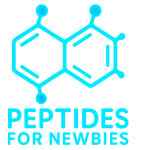GHK-Cu Injections: How to Reduce the Sting
If you’ve used GHK-Cu, you know it can burn when injected. That sting can make the process uncomfortable and discourage people from continuing. The good news is there are a few preparation and comfort steps that many find helpful in reducing that burn. Here are some practical ways to help ease the pain:
1. Transfer to a larger vial
Most vials of GHK-Cu hold only 3 mL. With peptide amounts ranging from 50 mg to 100 mg, this creates a highly concentrated solution. Transferring your GHK-Cu into a larger sterile vial gives you room to add more bacteriostatic water, lowering the concentration (mg per mL) without changing the total peptide content. Based on my research, GHK-Cu is generally more tolerable when diluted to around 10 mg per 1 mL.
For example: if you have a 50 mg vial, first reconstitute it in the original 3 mL vial. Then transfer the solution into a larger sterile vial (at least 5 mL capacity) and add another 2 mL of bacteriostatic water, bringing the total volume to 5 mL.
Links to larger sterile vials can be found on the Supplies Page.
2. Split into two containers
If you use reusable pen cartridges or have an extra 3 mL vial, another option is to divide the mixture into two separate containers, each holding 3 mL. As in the previous step, start by reconstituting the peptide in the original vial with 3 mL of bacteriostatic water. Once the powder is fully dissolved, use a syringe to withdraw 1.5 mL (about half) of the solution and transfer it into the second container. Now you have room to add an additional 1.5 mL of bacteriostatic water to each container, reducing the overall concentration.
By dividing the mixture this way, you effectively doubled the dilution, which many people report makes injections more tolerable. Just remember to maintain sterile technique anytime you transfer between containers.
3. Try a partial dilution method
Another way to manage concentration is by setting aside part of the mixture for later while further diluting the vial. Start by reconstituting the peptide in the original 3 mL vial with bacteriostatic water. Once fully dissolved, draw about 1.5 mL of the solution into a sterile syringe. Cap the syringe and store it in the refrigerator for later use.
Now, with 1.5 mL of solution still left in the vial, add an additional 1.5 mL of bacteriostatic water. This gives you a less concentrated vial you can use right away, while keeping one syringe at the original strength for later use. Once the diluted vial is used up, you can take the stored syringe(s), return the contents to the vial, and add more bacteriostatic water to dilute it further. This method could be a quick fix if you don’t have the necessary supplies for option #1 or #2.
Always use sterile syringes, label your stored syringe clearly, and keep it refrigerated until use.
4. Add extra bacteriostatic water into the syringe
If you’d rather not transfer between vials or split your supply, you can dilute on the spot by adding a small amount of bacteriostatic water directly into your injection syringe. After drawing up your normal dose, pull in extra bacteriostatic water, as much as you prefer, into the same syringe. Gently rotate the syringe until fully mixed prior to injection. This lowers the concentration for that single injection, which can often take the edge off the sting.
5. Ice the area before and after
A simple comfort measure that requires no extra supplies is icing the injection site. Holding an ice pack or wrapped ice cube against the skin for 30–60 seconds before injecting can numb the surface nerves and reduce the initial sting. Applying it again for a short period afterward may also help with lingering soreness or redness.
If you’ve been feeling the burn, hopefully one of these suggestions is effective for you.
